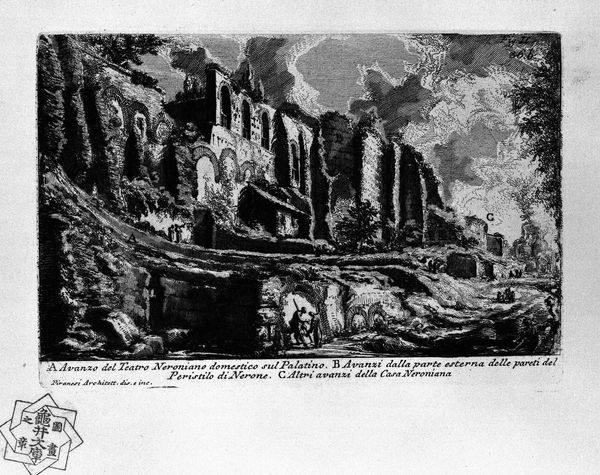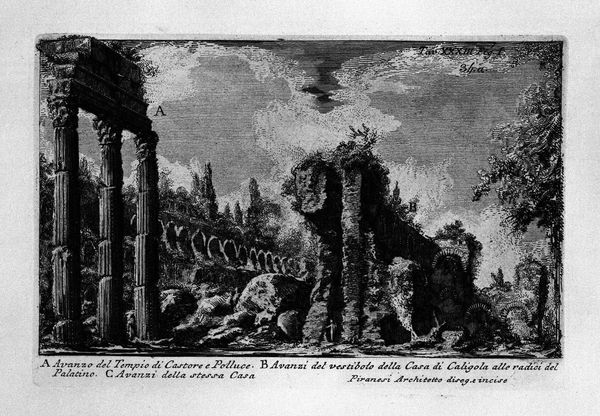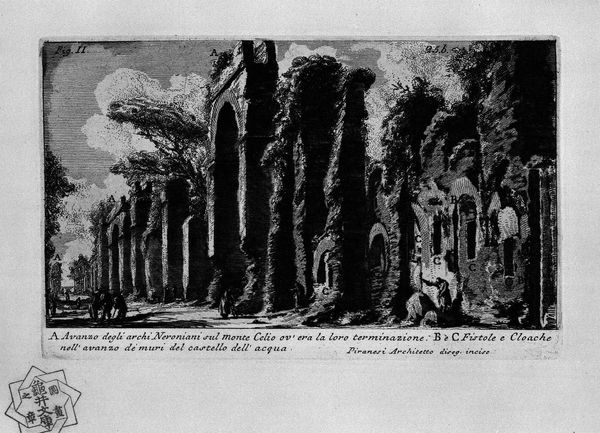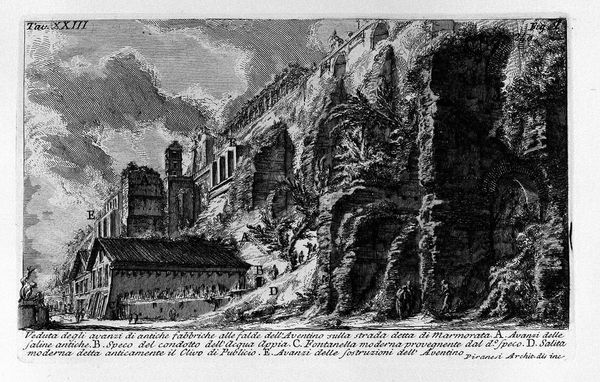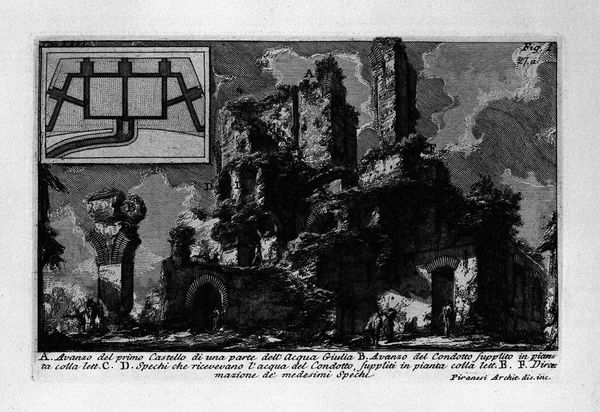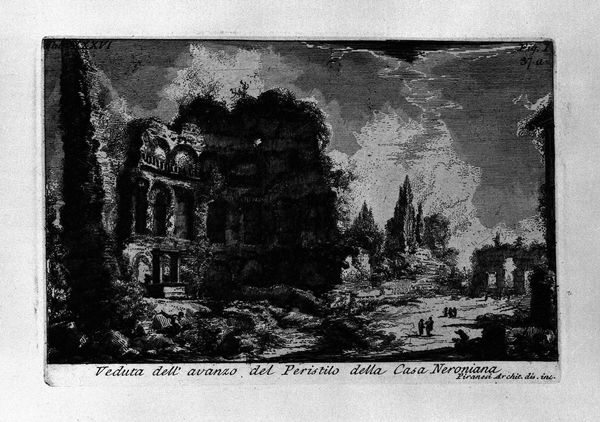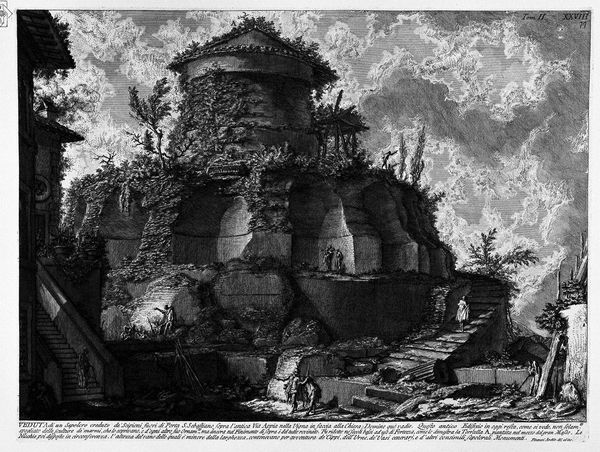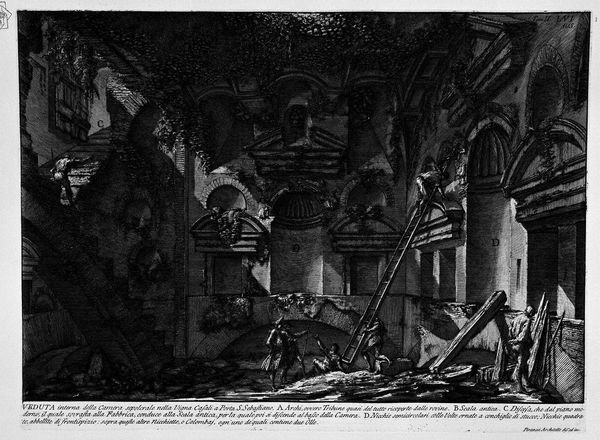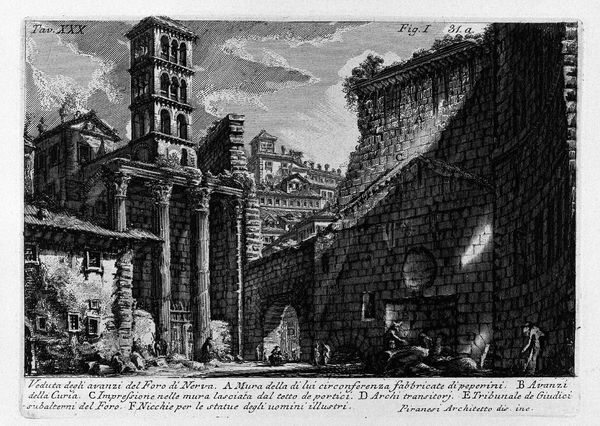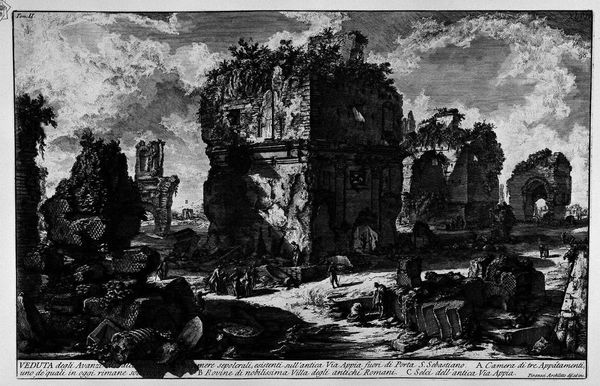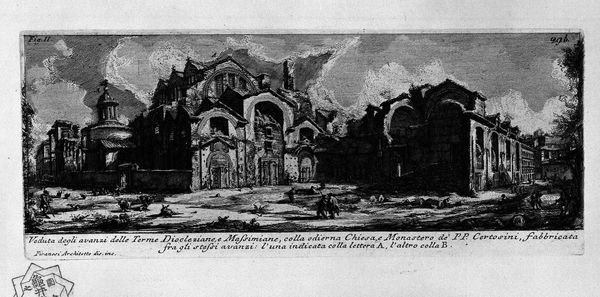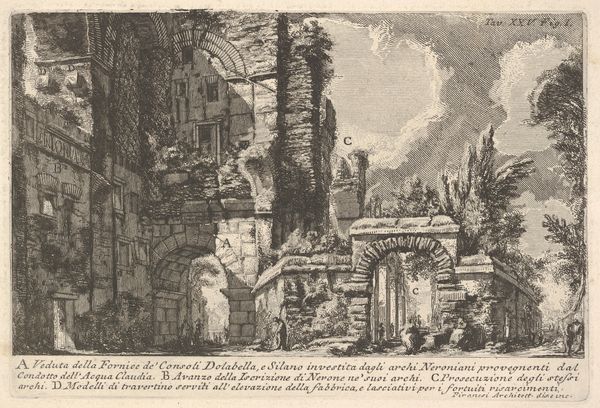
print, etching, engraving, architecture
# print
#
etching
#
landscape
#
ancient-mediterranean
#
cityscape
#
history-painting
#
engraving
#
architecture
Copyright: Public domain
Editor: This etching, created in 1756 by Giovanni Battista Piranesi, is titled "The Roman antiquities, t. 1, Plate XXV. Nero's aqueduct." It depicts a decaying cityscape, an evocative scene. What jumps out at me is how the artist used shadow to create a sense of depth. How do you interpret this work through its formal elements? Curator: The composition is undoubtedly striking. Note the interplay between the stark blacks and the textured whites achieved through Piranesi's masterful use of line. The density of the shadowed areas on the left throws the structural details on the right into sharper relief. Do you see how that directs the eye? Editor: I do. The stark contrast almost feels… theatrical. How much importance should we give the lines? Curator: They are the language of the piece, a way to examine form in its most elemental state. Observe the repeated use of arches; this echoes and amplifies our perception of spatial recession and, indeed, the ruinous nature of the architecture, both in structural solidity and spatial logic. It reinforces the overall sensation. How would you summarize Piranesi's use of contrast? Editor: It’s as if he's using light and shadow not just to describe the scene, but to create a powerful feeling of both grandeur and decay. I see the power of semiotics, because the ruins also feel symbolic. Curator: Precisely! And from a Formalist perspective, it’s that careful orchestration of line, form, and light that allows this piece to speak volumes. It shows us that even without understanding the specific historical narrative, we can glean so much. Editor: This deep dive into the visual components really unlocks a richer reading experience. I was too caught up with my first impressions of gloom to fully notice all the features. Curator: It is indeed through an understanding of line, form, and their relationship to create or resolve tension and form, that the piece speaks of power and ruin in equal measure.
Comments
No comments
Be the first to comment and join the conversation on the ultimate creative platform.
